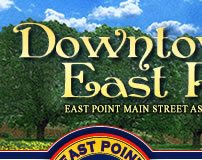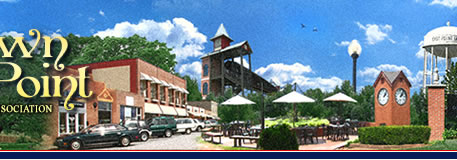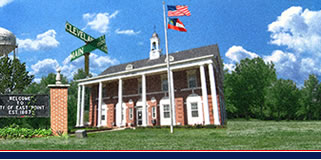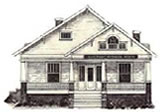


East Point Main Street Association, Inc. – PO Box 91274, East Point, GA 30344 |
 |
East Point, communicating a sense of place, community pride and heritage, while providing for a successful business and
residential environment.
Downtown Flashback Feature
Each month, EPMSA will dig through the East Point Historical Society's archives to provide you with that month's "Flashback Feature". Each feature will highlight a photo and/or article from East Point's vibrant history. The photos/articles will give you a brief look at East Point back then . . . more information about East Point's history is available at the East Point Historical Society located at 1685 Norman Berry Drive, East Point, GA 30344. You can contact them at (404) 767-4656 or visit www.eastpoinths.org. All "Flashback Features" will be archived on the website and can be accessed at any time.
East Point: 125 Years Ago, Part Two

East Point Avenue United Methodist,
formerly known as Nellie’s Chapel.
This summer, the City of East Point celebrates the 125th anniversary of its incorporation, chartered on August 3, 1887, by the General As-sembly and signed by the Governor on August 10, 1887.This is the second in a series of three highlights from East Point’s history leading up to its incorporation in 1887.
The first brick building in East Point was A.J. Lyle’s general store built in 1870 at the intersection of Main Street and Cleveland Avenue.
In the 1870s, East Point was a popular resort, made possible by the railroads that carried passengers from Atlanta and the Georgia coast. Nancy Ware’s boarding house was a well-known destination and was located near the library on Main Street.
Nellie Thompson died in 1873 of meningitis. That year a church was built in her memory and she is buried at the cemetery there. Originally facing Main Street, Nellie’s Chapel (now East Point Avenue United Methodist) was moved and turned to face East Point Street in 1919. This building was the meeting place for many of East Point’s early church congregations, regardless of denomination.
East Point moved from a farming economy to manufacturing when the Furman Fertilizer Company was established in 1880. The factory was located along the railroad tracks at Taylor Street. It employed hundreds of people many of whom were African Americans seeking jobs other than in agriculture. Housing was provided nearby along the tracks as it curved eastward.

Wagon Works , formerly White Hickory Wagon Works
The White Hickory Wagon Works was the second major factory to locate in East Point, in 1884. Taking its name from the most desirable of the hardwoods, the factory eventually employed over 300 people and produced 15,000 farm wagons a year.

One of Fort McPherson’s Gated Entry Points
In 1885 Congress authorized a permanent army post for the Atlanta vicinity. Just north of East Point, it was completed in 1889 and named for Union General James B. McPherson who was killed in the Battle of Atlanta 25 years earlier. (This marked the establishment of Fort McPherson, also known as “Fort Mac”. Fort McPherson was recently closed, but many of the historic buildings and parade grounds will be kept and incorporated into one of the largest master planned developments in Georgia).
-Carole Griffith
(Sources are from the collections of the East Point Historical Society).

Be sure to visit the East Point Historical Society at 1685
Norman Berry Drive to learn more about our city’s history. Museum & Archives - Free Admission
-
Thursdays 1 - 4 p.m., Saturdays 11 a.m. - 3 p.m.
- Phone: 404-767-4656